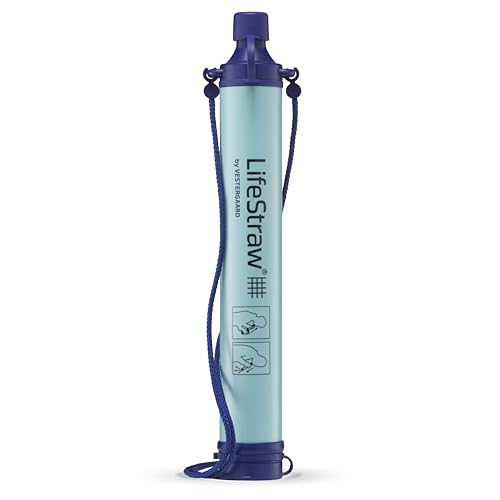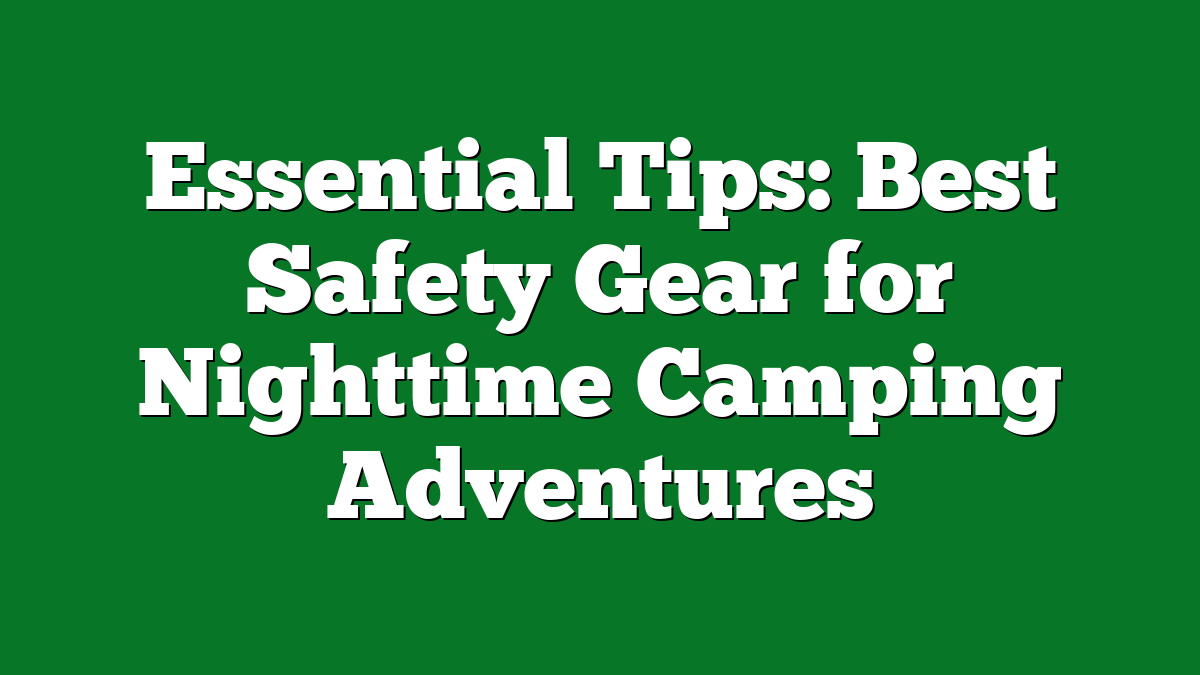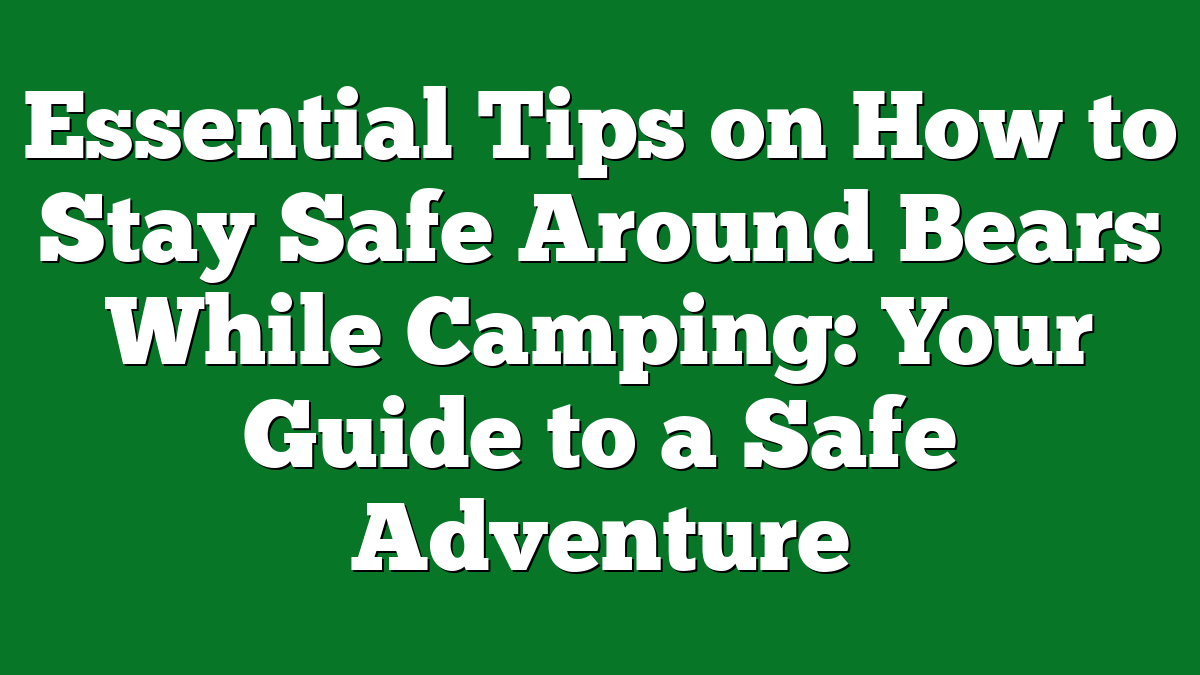There’s something magical about escaping into the wilderness and disconnecting from the hustle and bustle of everyday life. Primitive camping offers a chance to immerse yourself in nature while embracing simplicity. With just a few essentials and an adventurous spirit, you can experience the great outdoors like never before.
I’ve found that the thrill of primitive camping lies in its rawness. It’s about enjoying the basics and reconnecting with the environment around you. Whether you’re a seasoned camper or a newbie, understanding the fundamentals can transform your outdoor experience into something truly memorable. Let’s dive into the essentials that will help you enjoy every moment of your primitive camping adventure.
Understanding Primitive Camping
Primitive camping offers a unique experience, focusing on simplicity and immersion in nature. It’s a chance to disconnect from the modern world and connect more deeply with the outdoors.
Definition of Primitive Camping
Primitive camping refers to camping in a natural setting where access to developed facilities, like restrooms and showers, is limited or nonexistent. It involves self-sufficiency in all aspects, from setting up a shelter to sourcing food and water. This camping style encourages a deeper appreciation for the environment and an opportunity to practice essential survival skills.
Key Differences from Traditional Camping
- Facilities: Traditional camping usually provides amenities like picnic tables, fire rings, and restrooms. Primitive camping lacks these conveniences, requiring campers to adapt.
- Location: Traditional camping sites are often in developed campgrounds, while primitive camping occurs in remote areas. Campers frequently seek out national forests, wilderness areas, or off-the-beaten-path locations.
- Self-sufficiency: In traditional camping, helpers often maintain sites and facilities. Primitive camping demands complete self-reliance, including packing in and packing out all necessary supplies.
- Experience: Traditional camping focuses on comfort and convenience, catering to families and recreational campers. Primitive camping appeals to those wanting a raw, unfiltered outdoor experience that deepens their connection with nature.
Essential Gear for Primitive Camping
Primitive camping demands specific gear that enhances self-sufficiency and ensures a safe and enjoyable experience. I’ve found that having the right equipment can make all the difference in how I connect with nature.
Shelter Options
Choosing a suitable shelter is crucial for comfort and protection. I recommend considering these options:
- Backpacking Tent: Lightweight and easy to set up, these tents offer protection from elements while being portable.
- Tarp: An inexpensive and versatile option, a tarp provides shelter from rain or sun, perfect for minimalists.
- Hammock: Great for warm weather, a hammock allows me to sleep comfortably off the ground while enjoying the fresh air.
- Bivvy Sack: For solo adventurers, a bivvy sack offers ultra-lightweight protection, ideal for quick setups and quick escapes.
Cooking Equipment
Cooking in the wild can be a rewarding experience with the right tools. Here’s what I find essential:
- Portable Stove: A compact and lightweight option ensures I can cook meals quickly. Propane stoves provide reliable heat in any weather.
- Mess Kit: A durable mess kit that includes a pot, pan, and utensils provides everything I need for meal prep without being bulky.
- Fire Starter: Whether matches, a lighter, or fire starter sticks, having reliable ways to start a fire is crucial for cooking and warmth.
- Cooler: A small, durable cooler extends food freshness during my trips, allowing me to carry perishable items if desired.
With these essentials, I feel grounded in nature, prepared for whatever my adventure has to offer.
Preparing for Your Trip
Preparing for a primitive camping trip requires careful consideration and planning. Knowing what to expect ensures a memorable experience in the great outdoors.
Choosing the Right Location
Choosing the right camping spot sets the tone for your adventure. I focus on remote areas that provide solitude and beauty. Look for locations near water sources, like rivers or lakes, since they offer opportunities for fishing and drinking water purification. Research terrain features to find spots that meet your preferences, whether you love hiking, fishing, or just soaking in nature’s beauty. Check for restrictions in the area, including campfire regulations, to ensure compliance with local wildlife rules.
Planning Your Itinerary
Planning an itinerary helps make the most of your camping experience. I start by mapping out hiking trails and points of interest nearby. Note the distances and estimated times for each day’s activities, allowing for breaks and exploration. Prioritize flexibility in your schedule; the wilderness can surprise you. Awareness of sunrise and sunset times helps when gauging daylight hours for hikes or cooking. Prepare for emergencies by letting someone know your itinerary, ensuring safety. With a well-planned itinerary, I feel more confident tackling any challenges the wilderness presents.
Safety and Survival Tips
Staying safe while enjoying the great outdoors is crucial. Awareness of your surroundings and preparation can make a significant difference in your primitive camping experience.
Wildlife Precautions
Encountering wildlife can be thrilling yet dangerous. I always follow a few core guidelines to minimize risks.
- Store Food Properly: Use bear canisters or hang food at least 10 feet off the ground and 4 feet away from vertical supports.
- Keep a Clean Campsite: Clean up after cooking and eating. Simply packing out trash helps reduce unwanted animal visits.
- Observe from a Distance: If I spot wildlife, I enjoy watching them from a distance without approaching. Encounters can turn risky, especially with young animals.
- Know Local Wildlife: Familiarizing myself with local fauna helps in recognizing tracks or sounds. Understanding which animals are present enhances my awareness.
First Aid Essentials
Injuries can happen, so carrying a well-stocked first aid kit is critical. I ensure mine includes these items:
- Adhesive Bandages: Essential for small cuts and scrapes.
- Sterile Gauze Pads: Useful for larger wounds to provide proper coverage.
- Antiseptic Wipes: I use these to clean cuts before bandaging.
- Pain Relievers: A few packets of ibuprofen or acetaminophen can alleviate discomfort during my adventures.
- Tweezers: Handy for removing splinters or ticks.
- Emergency Blanket: Compact and lightweight, it helps retain body heat in emergencies.
Conclusion
Primitive camping has a unique way of reconnecting us with nature and ourselves. It’s about embracing simplicity and learning to rely on our skills and intuition. Each trip offers new lessons and unforgettable memories.
As I gear up for my next adventure, I’m excited to explore the wild and challenge myself in ways I never thought possible. With the right preparation and mindset, I know I’ll come away with a deeper appreciation for the great outdoors.
So grab your gear and hit the trail. The beauty of primitive camping awaits, and I can’t wait to hear about your adventures!











